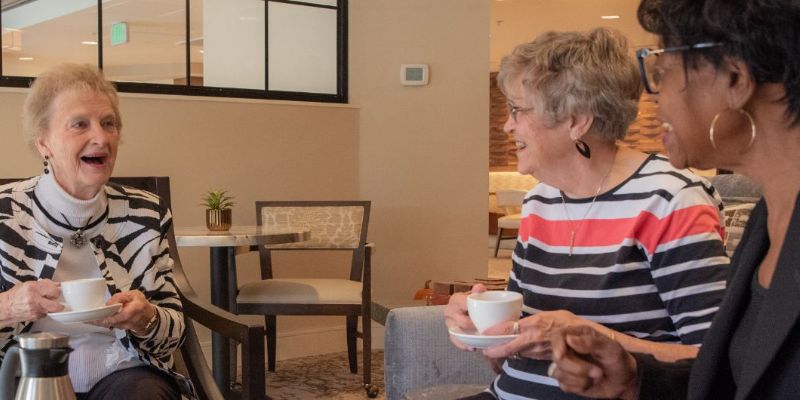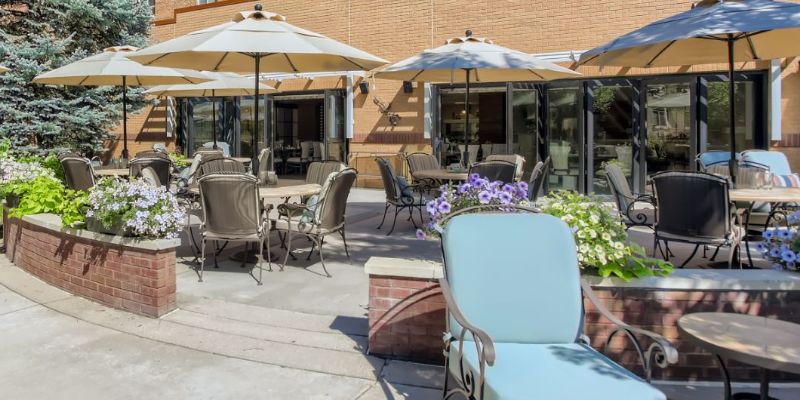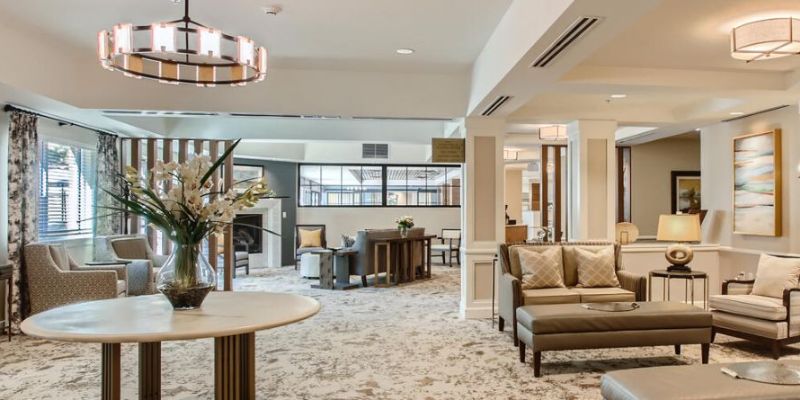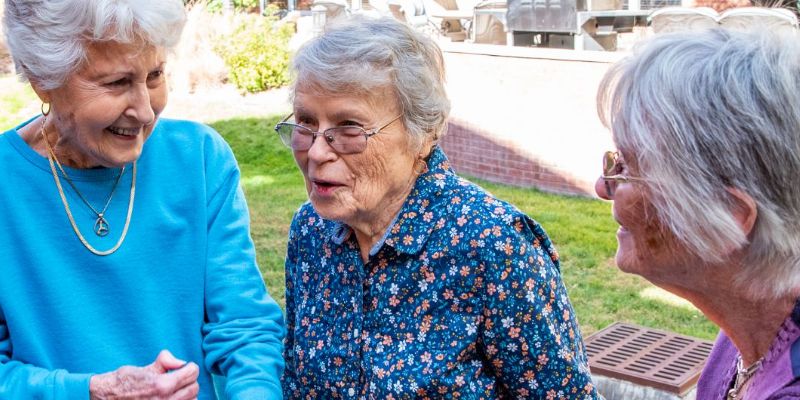Where To Begin
Home » Where To Begin


Where to Begin Your Senior Living Community Search
If you’ve been considering a senior living community or additional support for yourself as you age, we’re here to assist you in getting started. Community living can open up new opportunities for older adults, offering a sense of reassurance that you will be a part of a close-knit community and will receive excellent care now and in the future.
We’ve gathered information to guide you through the process, providing valuable insights and a glimpse of what to expect on this journey.
Start Here
Click on any of these sections to learn more about beginning your search for the right senior living community.

Benefits of Senior Community Living
Community living can contribute to emotional well-being and provide a sense of belonging.

Finding the Right Community
Follow these steps to guide you through the process of finding the best fit for you.

Understanding the Living Options
Understanding your options will help you make well-informed decisions.

Cost of Senior Living
Costs are based on the level of care needed, size of floor plans, the location, and more.

When to Join a Waitlist
Waitlists can be a good option if your chosen community doesn't have current availability.

Life Plan Communities
Life plan communities offer a full continuum of housing and care options.

What to Expect After Your Move
Participating in social activities and cultivating new friendships can ease this transition.

What Are the Benefits of Senior Community Living?
Senior community living can offer several benefits for older adults, contributing to emotional well-being and providing a sense of belonging. Here are some reasons why senior community living is often considered advantageous:
- Senior living communities provide a built-in social network, allowing residents to interact with peers regularly and reducing the feelings of isolation and loneliness many older adults experience.
- Amenities such as dining rooms, common areas, libraries, fitness centers, and recreational spaces enhance residents’ overall quality of life.
- Dining services are often available, making it easy for residents to access nutritious meals.
- Many senior living communities are designed with safety in mind, offering features such as alert pull cord and pendants, secure entry points, and staff available 24/7.
- Staff takes care of routine tasks such as housekeeping, yard maintenance, and home repairs, allowing residents to focus on leisure and social activities in their retirement years.
- On-site healthcare services and easy access to medical care are usually available, addressing the health needs of older adults, providing regular checkups, and managing chronic conditions.
- Many senior living communities offer various housing options, from independent living to assisted living and memory care, enabling residents to choose a living arrangement that meets their current and future needs.
Before choosing a community, older adults and their families should research and visit different options.

How to Find the Right Senior Living Community
There are many factors to consider when looking for the right senior living community, but it helps to start with what is most important to you. Here are steps to guide you through the process:
- Research different senior living options, such as independent living, assisted living, skilled nursing, or memory care, to determine which best suits your needs.
- Consider the location of the senior living community. Some factors to consider include proximity to family and friends, access to healthcare, climate, and local amenities.
- Schedule visits to multiple senior living communities. During your visits, pay attention to the cleanliness, friendliness of staff, and overall atmosphere. Talk to residents to get their perspectives on the community.
- Understand the range of services and amenities, such as welcoming shared spaces, meals, transportation, housekeeping, and life enrichment programming. Ensure that these align with your needs and preferences.
- Carefully review contracts, including fees and payment structures. Understand what is included in the fees and if there are any additional costs. Clarify policies regarding refunds and changes in care needs.
- Anticipate potential changes in health and care needs. Ensure that the chosen community can accommodate your evolving requirements, such as transitioning from independent living to assisted living.
By following these steps, you can make an informed decision and find a senior living community that aligns with your needs, preferences, and values.

What Are the Senior Living Options?
Senior living options encompass a variety of housing and care choices tailored to the needs of older adults. Understanding these options will help you make well-informed decisions based on health, lifestyle, and financial considerations. The following are some of the options available:
- 55+ active adult communities are great options for adults and retirees over 55 who are seeking a low-maintenance, social lifestyle, but don’t require access to the senior care services and healthcare support.
- Independent living is ideal for those who want to live independently but have a supportive community and convenient services and amenities around them.
- Assisted living offers help with daily living activities (e.g., bathing, dressing), making it ideal for individuals who need assistance but still want independence.
- Memory care provides specialized care for individuals with Alzheimer’s or other forms of dementia.
- Skilled nursing is offers around-the-clock nursing care on a long-term basis, making it a good choice for those who are receiving treatment for ongoing health conditions.
- Short-term rehabilitation assists older adults with physical, occupational, speech, and other specialized therapies as they recover from illness or injury following a hospital stay.
- Home care services provide in-home assistance – whether in one’s home, apartment, or senior living community – with activities of daily living, medication management, meal prep, transportation, and more.
- Adult day programs provide engaging programming and opportunities for connection for older adults, while also offering family caregivers time to work, relax, or address other important tasks.
Take the assessment
Find Out If Senior Living Is In The Budget

The Cost of Senior Living Communities
Senior living costs can vary significantly due to level of care needed, size of floor plans, the community’s location, and the amenities provided. While senior living communities can be expensive, their range of services and amenities can contribute to a higher quality of life for residents and peace of mind for their families. Evaluate different communities to find one that best fits the individual needs and preferences of the older adult involved.
Consider your current monthly expenses living in your home, including mortgage or rent payments, homeowners or renters insurance, property taxes, utilities, groceries, home maintenance, and other costs. Compare those with what you can expect to pay at a senior living community, where prices typically include meals, utilities, housekeeping services, cable and WiFi, amenities, and other benefits designed for older adults.

What If There is a Waitlist at My Chosen Senior Living Community?
If your desired area has a high demand for senior living communities, you may find that some communities don’t have apartment homes readily available. In these cases, joining a waitlist may provide you with priority treatment when a spot becomes available.
A waitlist list allows you and your family to plan and prepare for the transition to an assisted living community. This includes making necessary financial arrangements, downsizing, and addressing any other logistical considerations.
Being on Clermont Park’s waitlist means you’ll have opportunities to engage with the community, attend events, and get to know the staff and residents—before you move in. Once a spot becomes available, you will likely be notified promptly, giving you enough time to finalize your plans and make a smooth transition to the community.

What is a Life Plan Community?
A life plan community, also known as a continuing care retirement community (CCRC), offers a full continuum of housing and care options for older adults, from independent living to skilled nursing care. By guaranteeing access to these living options, Life Plan communities provide peace of mind that you will be able to transition between levels of care as needed, while staying in your community. It is ideal for those who want a comprehensive and long-term plan for the future without having to move.

What Can Seniors Expect When Moving to a Senior Living Community?
Transitioning to a senior living community marks a significant change in one’s life, accompanied by a spectrum of emotions and adjustments. Like any relocation, residents must adjust to the new surroundings, daily routines, and social dynamics. Although some may initially feel a sense of sadness or anxiety, these sentiments typically diminish as individuals settle in and grow more familiar with their new neighborhood and community. Engagement in social activities, events, and cultivating new friendships can ease this transition.
Open communication with community staff and fellow residents is invaluable, as is active participation in activities, groups, and events. Giving yourself the necessary time to acclimate is essential. Embracing the move to a senior living community can unfold a fulfilling and enriching chapter in life, presenting fresh opportunities for new friendships and a supportive environment that fosters personal growth and well-being.
We Are Here to Help
The Clermont Park team is here to help answer your questions, provide support, and offer information and resources to aid in your search.
Please contact us using the below form to learn more about senior living in Denver.
